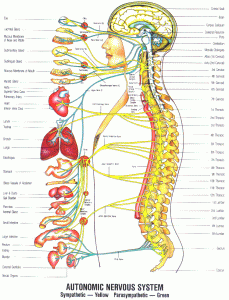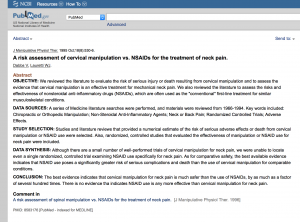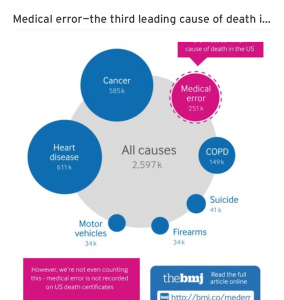23 May Hypocrisy in Healthcare
Of course, it’s all blown-over now, but just a couple of weeks ago, the internet was alight with a video that had gone viral showing an Australian chiropractor manipulating the thoracic spine (mid-back) of a little baby who had been brought to him because she was suffering with colic.

Image of the Autonomic Nervous System, borrowed from http://galbraithchiropractic.com/
Using applied anatomy – something we will return to briefly later – the chiropractor used his highly honed palpation skills and identified tension and restriction at the level of the spine where the nerves exit to feed the digestive tract. As is often the case in alternative or complementary medicines, the evidence base for whether or not colic can be effectively treated using manual therapies is relatively weak, but this published study does report subjective improvements. However, it should be noted that conventional medicine evidence base is not too hot either – one report in the Journal of the American Medical Association claiming that 80% of allopathic medical approaches are not evidence based.
The understandable outcome of the video (which has now been taken down, but can still be viewed here) was that many people were shocked at the apparent “violence” of the treatment on such a helpless and vulnerable newborn.
Blog posts and official comments from governing bodies started appearing all over the internet some supporting and others condemning this highly trained, rational and well-intended medical professional. From healthcare professionals to international news groups, the story appeared to have been blown up out of all proportion – perhaps there wasn’t too much else going on that week… Or, perhaps there was (read on).
In my training as an osteopath it was a standard assignment to research and write a paper on the risks and benefits of high-velocity low-amplitude thrusts – also known more colloquially as clicking, cracking or manipulation techniques – the same techniques used by this chiropractor. The reality, it turns out, is that the risk of spinal manipulation as a cause of serious injury or death is far less than driving a car, walking down the road or even having sex. And just about the only danger  worthy of mention (with the exception of obvious risks, such as manipulating those with pre-existing bony pathologies, like osteoporosis) is manipulation of the upper cervical spine… but just how dangerous is that? Well, it turns out that manipulation of the upper neck is several hundred times safer than taking an aspirin.
worthy of mention (with the exception of obvious risks, such as manipulating those with pre-existing bony pathologies, like osteoporosis) is manipulation of the upper cervical spine… but just how dangerous is that? Well, it turns out that manipulation of the upper neck is several hundred times safer than taking an aspirin.
Of course, the baby featured in this most recent scandal didn’t have their cervical spine manipulated as when one >>applies knowledge of the anatomy<< the nerves that feed the digestive system exit the spine from the mid-back. So the risks to the baby were even lower than “several hundred times safer” than aspirin. And isn’t it slightly concerning that medical students barely learn anatomy anymore; so little surprise there were up in arms about this barbaric looking approach, as they probably didn’t really understand what the chiropractor was even attempting to do. Even as far back as 2001 I was talking with a 5th year medical student from a renowned London-based Medical School, and he explained that he had done less than 24 hours total on anatomy; had experienced one 2-hour guest lecture on nutrition and that everything was about the pharmaceuticals – pharmacology, paediatric pharmacology, geriatric pharmacology, pharmacokinetics, pharmacodynamics, pharmacogenetics… Who could it be that is running this show?!! I wonder what the average medical advice would have been to the parents of the child with colic?
I did consider putting up a video of a crying baby and recommending to the parents that they should give it Calprofen (a kind of “baby aspirin”) to see just how many YouTube hits that would achieve – as this would put the child at several thousand times more risk than a thoracic spine manipulation, but …

BMJ Report: Conservative Figures estimate medicine to be 3rd leading cause of death
So why the furore? Well, it turns out that this very same week none other than the British Medical Journal published a report highlighting that medical error is – conservatively speaking – the 3rd leading cause of death in the US. An audio interview of one of the authors of the paper is available here where he explains why he would consider this “conservative”.
However, this information is not new. This article, from the year 2000, reported very similar figures, while a subsequent follow-up with the Doctor Starfield, author of the article and Professor of Public Health at John Hopkins Hospital, suggested that when consideration is made of the lack of health education provided by medical doctors, they could reasonably seen as the leading cause of death in the US. Now what was that medical student saying about learning about the body and about nutrition…? This notion is discussed further here and here.
In other news, there have been (and are ongoing) young doctors strikes here in the UK and of course there is great concern about the adverse effects of this… but there may not be as much to worry about as people may at first think. A report from the British Medical Journal, also in the year 2000, on similar incidents in the past have shown that when there was a Doctor’s strike in Israel the death rates actually fell… In fact, it became such a strong trend (inasmuch as people weren’t dying) that the Undertakers were starting to go out of business. It would be funny if it wasn’t so sad. But it’s not just the BMJ, a review of the effects of 5 different doctors strikes was published in 2008 and can be viewed here.
So, when there is furore and excitement over what actually was a very safe, if slightly uncomfortable to watch, treatment approach, it may be worth stepping back and waiting to see what else is going on in the news to get a feel for the bigger picture…





No Comments